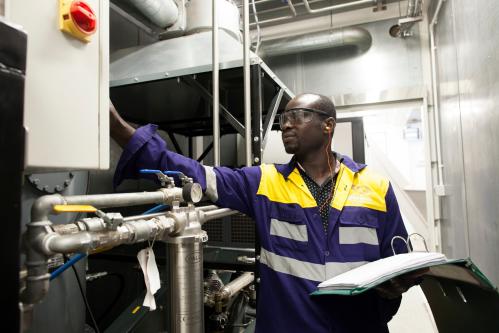The recovery from the Great Recession is taking much longer than most forecasters expected. With the benefit of hindsight, perhaps it is not surprising that it is taking a long time to overcome the massive slump in real estate and the accompanying loss of household wealth. Consumers are still holding too much debt, are worried about their jobs, and are understandably reluctant to spend. America needs all the sources of growth that it can find, right now. What is the role of the manufacturing sector in driving the recovery?
Over the past 13 years, over a third of the country’s manufacturing jobs have disappeared, either due to increased productivity and automation or outsourcing overseas. Prior to the recession, the trade deficit peaked at around $800 billion a year, with the deficit in manufactured goods accounting for the bulk of it. While the problems in America’s manufacturing sector are relatively easy to identify, as President Obama highlighted during his speech yesterday in Iowa, there is no one silver bullet that can instantly restore balance to America’s economy. Instead, coordinated long- and short-term action is needed to help boost American manufacturing competitiveness and stimulate our economy. It is not realistic to expect that manufacturing will be a major source of jobs in the recovery. Employment in the sector is currently growing slowly and should continue to grow at a modest pace for the next couple of years as the recovery proceeds and strengthens, but the long run force of productivity increase will mean that producing more goods will not require a lot of additional workers. Nevertheless, restoring the competitiveness of America’s manufacturing sector is still a vital goal. In the years ahead, we must not return to the huge trade deficits of the first decade of this century and the endless foreign borrowing that financed them. America must pay its way in the world and not add to the foreign debts we hand on to our children. Moreover, if manufacturing does not become globally competitive, it could lose a million more jobs over the next ten years.
During the course of his remarks, President Obama highlighted an issue I have long championed as a way to spur U.S. manufacturing over the long term – increased support for America’s community colleges. Good community colleges work closely with local employers to ensure the training they provide matches the needs of area workplaces and the National Association of Manufacturers has identified community colleges as the place where production workers can receive training in modern manufacturing techniques. Additional federal funding for community colleges would be a good investment, but realistically that is unlikely to happen any time soon. Even without any additional funding, states and cities can greatly improve the quality of the education available to students. Today’s community colleges range from terrific to terrible and if best practice teaching methods can be spread more widely, they can contribute to closing the skills gap that is hurting the US manufacturing sector even now.
While the Alliance for American Manufacturing seems concerned that some think tanks consider manufacturing “yesterday, instead of tomorrow,” my colleagues and I at Brookings have long been committed to the idea that a strong manufacturing sector is key to the future prosperity and long-term competitiveness of the United States. In our recently published paper “Building a Long-Term Strategy for Growth through Innovation,” we proposed several short- and long-term recommendations to jump start manufacturing and put America back on the path towards healthy economic growth. Together, we see the future of the American economy as:
Innovation Fueled: Taking advantage of technology
- Short term: Support basic scientific research by extending the R&D tax credit
- Long term: Create a better system for commercializing research from universities
- Long term: Streamline the process for approving patents
- Long term: Step up the enforcement of intellectual property protection, especially overseas
Export Oriented: Seizing the opportunities of world markets
- Short term: Ratify new trade agreements in Asia and Latin America
- Long term: Consolidate federal support for manufacturing research into a single Manufacturing Innovation Fund
Opportunity Rich: Investing in intellectual capital
- Short term: Double the number of H-1B Visas
- Long term: Establish national postsecondary goals and create a performance measurement system to support the effective use of federal resources
Low Carbon: Helping promote energy security and sustainability
- Short term: Create and fund a network of energy discovery institutes at leading research universities
- Short term: Authorize a National Infrastructure Bank to promote investment
- Long term: Authorize a Green Bank; Fully fund and implement the Green Bank and Infrastructure Bank






Commentary
How Manufacturing Can Lead to Future Economic Prosperity
June 29, 2011